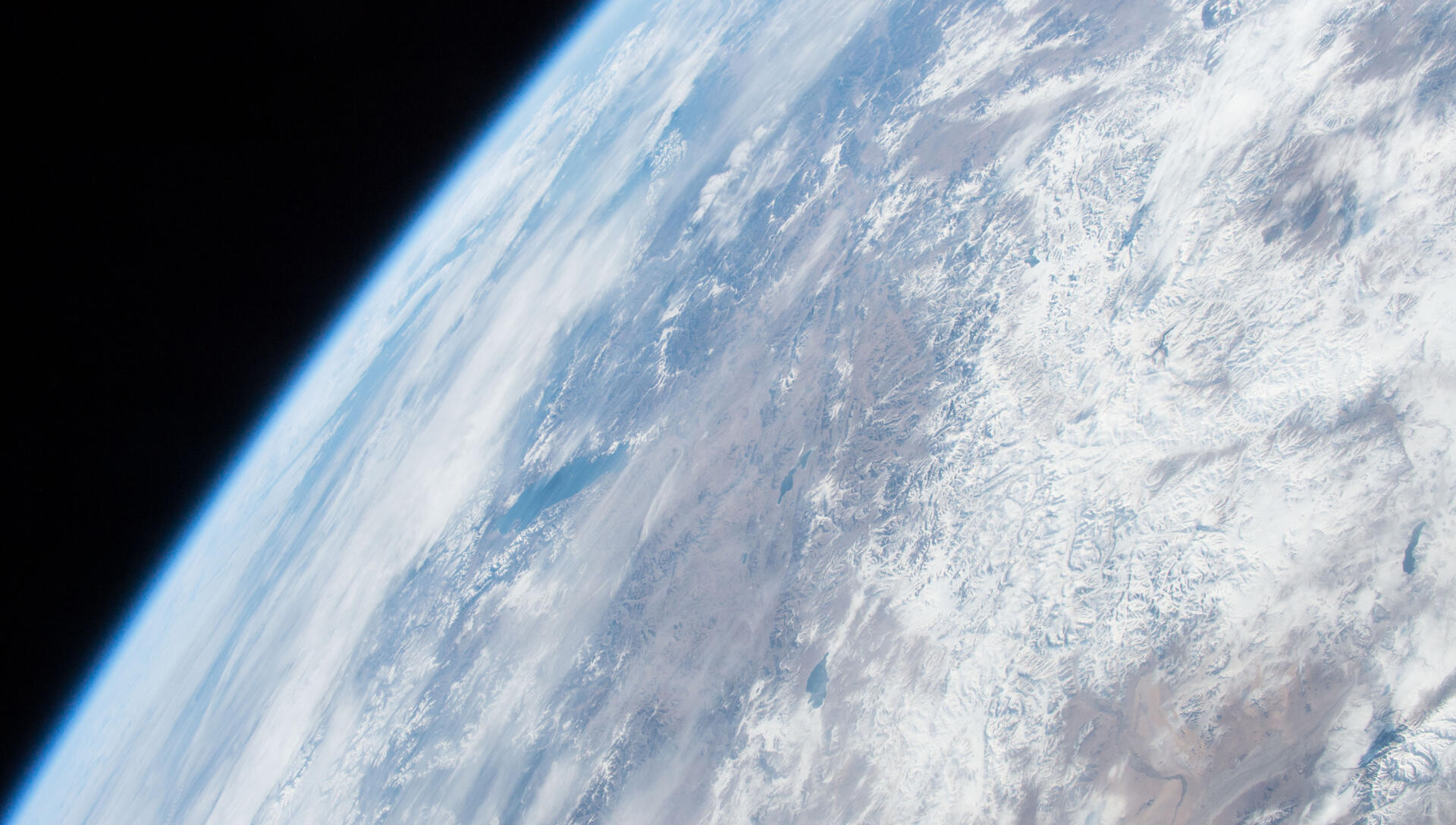
The Earth taken from the International Space Station (ISS) ©JAXA/NASA

The Earth taken from the International Space Station (ISS) ©JAXA/NASA
The United Nation's Sustainable Development Goals (SDGs) were set to create a society that "leaves no one behind." What can JAXA do to contribute to the achievement of the Goals by leveraging its strengths? KURIYAMA Ikuko, who had served as the leader of JAXA's cross-functional SDGs promotion team, talked with biologist FUKUOKA Shin-Ichi about the Earth and life viewed from the perspective of space as well as about a desirable future for humankind.
KURIYAMA
I strongly feel that our society is more dramatically changing in the context of the SDGs. Recently, people's lifestyles have been changing due to COVID-19, and the public is starting to commit to the decarbonization of society across the globe. Accordingly, more companies in the private sector are incorporating the ideas for the SDGs in their corporate strategies. Japanese government included the attainment of the SDGs in its Basic Plan for Space Policy in 2020. JAXA had been contributing to the SDGs even since before the formulation of the Plan, and the International Relations and Research Department, where I was working at that time, launched a team for JAXA to make our contribution to the SDGs in an even more organizational and structured manner and to create synergy among JAXA's overall activities and multiple departments of the Agency. The team then led the formulation of vision and the basic policy as part of its effort to foster the SDGs across JAXA. Professor Fukuoka, what do you think about the SDGs?
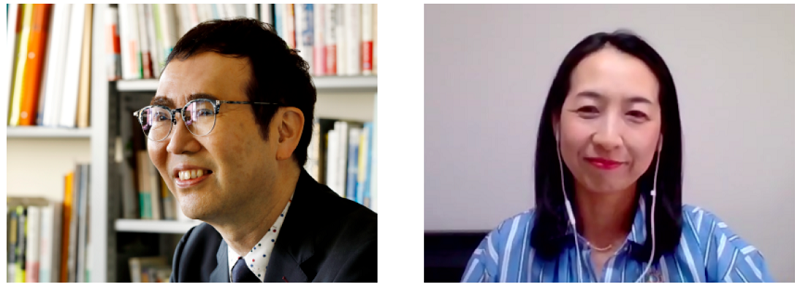
FUKUOKA
The SDGs have been increasingly regarded as the very important goals to be attained by 2030, and indeed the SDGs represent one of the great issues set for Expo 2025 Osaka, Kansai, Japan for which I am serving as a producer. The theme of Expo is "Designing Future Society for Our Lives," and eight producers, including myself, will lead the design and creation of the pavilions for the event based on their respective interpretations of the theme for future generations.
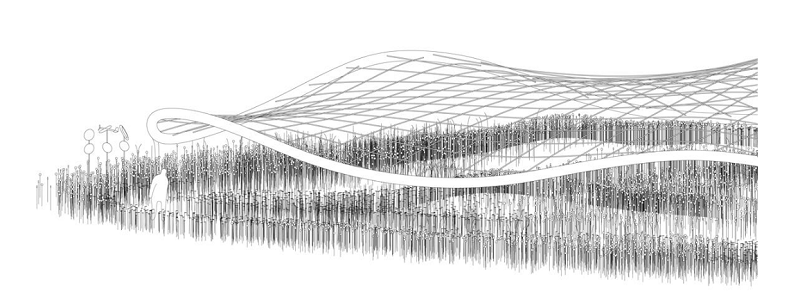
KURIYAMA
Based on what ideas are you producing your signature pavilion?
FUKUOKA
I am producing it on the theme, "Quest of Life" and the pavilion was named "Dynamic Equilibrium of Life - I am You."
KURIYAMA
Dynamic equilibrium is one of the concepts that you are strongly promoting. You say, "Life is in a state of dynamic equilibrium."
FUKUOKA
Yes, indeed. Dynamic equilibrium is a key concept in my theory on life. Life repeats self-destruction and self-rebuilding to undergo small changes, thereby avoiding dramatic changes. Based on this presumption, it can be said that all things surrounding us, including energy, substances and information, are also constantly changing in a dynamic cycle of changes. Living creatures, including ourselves, exist as nodes of the cycle. In other words, the world is constantly accepting something and handing it over. So "I am You" and I named the pavilion, "Dynamic Equilibrium of Life - I am You."
KURIYAMA
I see!
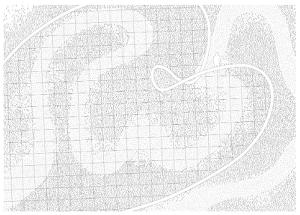
Illustrative image (2) of "Dynamic Equilibrium of Life - I am You"
FUKUOKA
In this context, "You" means other people and the global environment. The global environment is indispensable for people to make their lives possible. Before the birth of humankind, the earth's natural environment was kept in dynamic equilibrium in a true sense. However, human beings, a weird creature, came into existence and began to create cities and use resources more and more, thinking that all other living creatures were existing for humankind and acting as if they owned the whole earth. I have been thinking, "Humankind should not behave in such an arrogant manner," because we are supported by other living creatures and the environment, and are an integral part of the global environment. We must be more aware of this fact and shift from the conventional selfish way of thinking to more altruistic disciplines. This is what I believe as a biologist, and the pavilion for the Expo is designed for the philosophical review of life.
FUKUOKA
I have been thinking about dynamic equilibrium on the earth only, but a range of elements are coming from space to reach the earth in a trace amount, and the global environment is indeed connected with space to constitute a bigger system of dynamic equilibrium. Moreover, the earth belongs to the solar system, which belongs to the galactic system, which is a part of space. I mean there is no boundary between space and the earth, although there seems to be one. Does JAXA have its definition about at which altitude space begins?
KURIYAMA
Wow, space can also be included in the target of the concept of dynamic equilibrium! JAXA does not have such definition, but generally, space is often thought to begin at an altitude of at least 100 km. JAXA conducts research on aeronautic technologies as well as space, and in fact we are conducting activities without setting any borders between the earth and space.
FUKUOKA
Nature has no borders, as JAXA has no borders in its activities.
KURIYAMA
Yes! In fact, I strongly believe thinking about space means to think about the earth. For example, the International Space Station is placed in a very restrictive and extraordinary environment in terms of the availability of water, air, food, electricity, communication network and living space, besides the existence of high-level space radiation. In such a harsh environment, we need to lead our life in an extremely energy-saving and environment-friendly manner. We could say such a harsh environment is something similar to some cases on the earth: such as deserts, conflict- and disaster-affected areas, and the isolated and remotely working environment caused by COVID-19. In order for humankind to conduct activities and live in such a harsh environment in a sustainable manner, innovations are necessary. Solving issues related to space could thus help us solve a range of problems that we are facing on the earth. Moreover, thinking about space could help us become more aware of how much our life on Earth is blessed and irreplaceable.
FUKUOKA
Yes, I also think so. By knowing about the space environment, you can re-recognize how exquisitely the balance of the global environment is maintained.

Astronaut HOSHIDE Akihiko working on oxygen producing equipment in the ISS ©JAXA/NASA
KURIYAMA
Moreover, space technologies are becoming indispensable for our life and society. For example, smartphones and car navigation systems that we use in our daily lives are relying on the satellite-based positioning systems. Also, in case of disaster, earth observation satellites will be used for the identification of damage caused by the incident. On the other hand, space debris is becoming a serious problem. In outer space, the amount of space debris, such as components and broken pieces of artificial satellites and rockets, is increasing. If a piece of debris hits a satellite, it might badly affect the operation and functions of the satellite, which in turn could cause serious damage to the basic infrastructure for our daily life. Protecting the space environment is therefore directly related to the sustainability of our society on the earth.
FUKUOKA
Indeed, since the beginning of the 20th century, lots of artificial satellites have been created and launched. Going forward, I hope that artificial satellites will be made in consideration of the fact that they will eventually be broken and need to be removed from space. You can learn this kind of attitude by studying life. As I have already said, cells continue to destroy themselves. They repeat self-destruction, not because they have defects or have gotten old. They do it because it is the only method to address the law of increasing entropy, which is the basic principle of space: all orderly things head in the direction of destroying the order. I think humankind can learn a lot from the dynamic equilibrium of life. Of course, there are technologies that are indispensable for engineering, but I think you could promote space development also by learning from life or biometrics to make things that will not generate much waste even when they are broken.
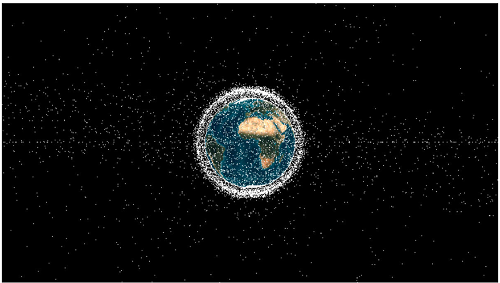
KURIYAMA
Definitely. As for debris, JAXA has developed a support tool to avoid collision against debris and distributed the tool for free of charge. We are also pushing ahead with the development of technologies to remove debris. Moreover, at the UN, I had a privilege to make a presentation about "JAXA Sustainable Space Principles," the action guidelines that we set for sustainable space activities. In space, which provides a unique environment, we need to adopt innovative ideas and methods that are different from those adopted on the earth, and various people are showing their interest in space. So I believe that space can offer us a place for cocreation among people from different fields, including you, Professor Fukuoka. JAXA has strengths in the field of space including the sky and can promote the sustainability of space and the earth. Through partnerships and cocreation with diverse stakeholders, we, JAXA would like to provide new value toward a sustainable future.
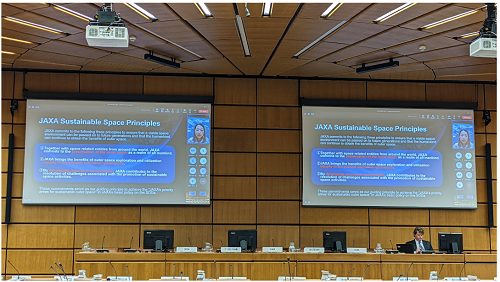
KURIYAMA
None of the 17 Goals of the SDGs clearly refers to the sustainability of the space environment or activities in space including the sky. However, as I have already said, we need to make space activities sustainable as a precondition for our future and the sustainability of society on the earth. So, the sustainability of space could be an additional goal to the current 17 Goals. I hope we can promote this idea toward the establishment of the goals to be pursued in and after 2030 as "post-SDGs."

FUKUOKA
The 17 Goals do not include any goals that address the space environment. As already said, there are no boundary between the earth and space except for those set based on the rules formulated by human beings, and I also strongly think that a perspective on Space should be added as to the current SDGs as the 18th perspective.
KURIYAMA
As for the SDGs, one of my colleagues has hit upon a unique idea. In Japan, it is coincident that we call the best skill or technique among those possessed by an individual "the 18th." So, this colleague suggested it is interesting if organizations and individuals proactively set the 18th goal in their respective field of specialization. Professor FUKUOKA, what will you list as your18th goal?
FUKUOKA
Well, how about listing the protection and succession of cultural activities and intellectual property as the 18th goal? The 17 Goals do not pay much attention to culture, art and natural science, I observe.
KURIYAMA
It is truly important to protect and inherit culture. Space is also connected with culture and art, and I believe we need culture and art to live in space.
FUKUOKA
In present society, activities are finely divided into scientific and cultural fields and "experts" in the fields tend to think only within the scope of a very narrow field of their specialization. In the past, they were not so finely divided. For example, in the 17th century, Dutch painter Vermeer, who was a man of scientific mind and whom I am a great fan of, painted pictures perfectly based on the rules of perspective, and the painter is said to have been trying to transform the 3D world into beautiful 2D pictures by using a camera obscura. There was also a man who was born in the same town and in the same year as Vermeer. This man, Leeuwenhoek, is widely known as the father of microbiology. It is said that the two talked about what could be seen through a microscope and were commonly interested in optics.
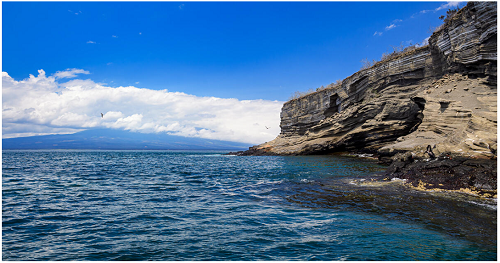
KURIYAMA
So, art and science were closer to each other than today.
FUKUOKA
Exactly. As for what approach to take to the world, art and science have much in common. By changing the combination of lenses used for a microscope, you can use it as a telescope to conduct research into space. Long time ago, the movement of stars was said to control the fates of people, which was a romantic and superstitious way of thinking. Art and science as well as literature start from a sense of wonder about nature and space, with people thinking it beautiful, wonderful, and mysterious.
KURIYAMA
Yes, I think so, too. I think all of scientific and technological activities including those of JAXA, were originally triggered and have been driven by senses of wonder and curiosity on how nature works. I would therefore list expanding human possibility and broadening dreams and hopes as my 18th goal. I would like to envision the future where science and technology, including aerospace technology, bring pleasure and amazement to people, and are used to expand the possibility of all life including humankind and other creatures, and to contribute to their happiness going forward.
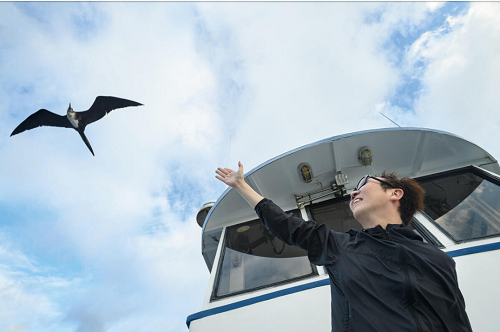

Galapagos giant tortoise (about 1.0 to 1.5 m in length and up to 250 kg in weight), the biggest living tortoise in the world. Photo (taken by ABE Yusuke) extracted from the professor's book on his voyage to the Galapagos Islands (published by Asahi Press)
FUKUOKA
Observing the macroscopic world of the universe and observing the microscopic world through a microscope are the same thing. You can see cells through a microscope, which constitute a microcosm and make you feel as if you were observing space. This indescribable feeling drives people to start building up their culture. I hope that children will continue to have a sense of wonder. We therefore should think about the essence of the SDGs also from the perspectives of educational and cultural promotion.
KURIYAMA
Yes, in fact, in order to achieve the mission of our team, my single most important priority was to promote a network of collaboration for the SDGs both inside and outside of JAXA. Space is full of wonder, and it inspires our dream and excitement. With such an inspiring nature, I hope space activities, including those conducted by JAXA can lead cocreation and network of collaboration among people for the future of the earth and humankind.
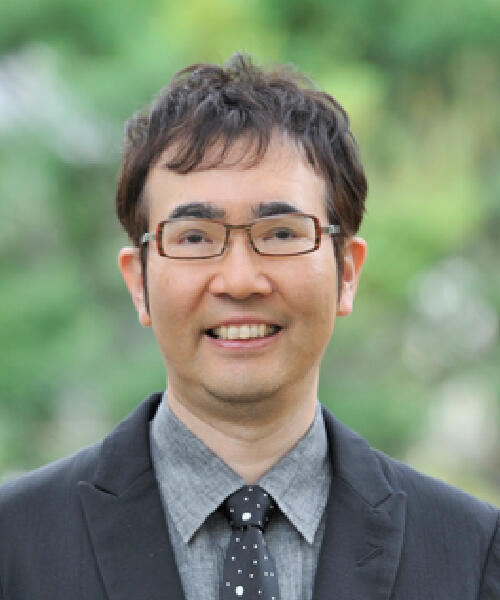
Born in Tokyo. Professor at Aoyama Gakuin University and visiting professor at Rockefeller University in the United States. Recipient of the Suntory Prize for Social Science and Humanities. Wrote a range of books on life viewed from the concept of dynamic equilibrium, including his bestselling book, Seibutsu to Museibutsu no Aida (meaning "Between organic matters and inorganic matters," published by Kodansha, sold more than 800,000 copies) and Doteki Heiko (meaning "Dynamic equilibrium," published by Kirakusha). Known as a fervent fan of Vermeer. Traveled around the world to appreciate the paintings of Vermeer and served as supervisor for the "Re-Create Vermeer" exhibition, for which all paintings of Vermeer were digitally reproduced.
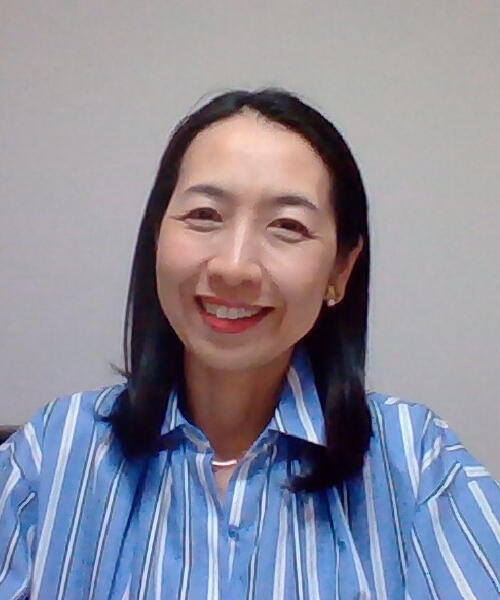
Born in Ibaraki. Holds PhD. in public policy. Had extensive experiences in international cooperation and served as coordinator for agreements and facilitator for earth observation projects. Had been recently devoted to fostering cooperation with Asia-Pacific countries in the area of space policy and law and to promoting space activities for tackling global issues including the SDGs. Enjoys appreciating arts and traveling. Has been developing more interest in Japanese culture recently, including the tea ceremony and kimono wearing.
All the images are copyrighted ©JAXA unless otherwise noticed.